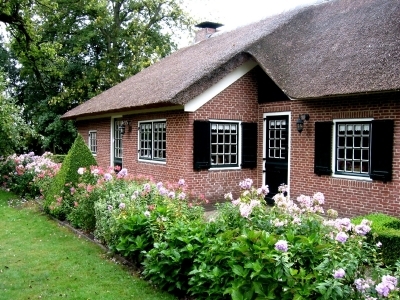 Thatching is a method of building roofs through the use of vegetation such as reed. This roofing system was one of the earliest roofing systems available. In Europe, it has been used since the Neolithic period as well as by the early settlers of the New World in 1565. All those years, thatching was a symbol of poverty. It was only 30 years ago when the perception towards thatching changed and began to be associated with wealth and luxury particularly in the United Kingdom. With a warmer yet similarly moist climate, could we see Houston roof thatching in the future?
Thatching is a method of building roofs through the use of vegetation such as reed. This roofing system was one of the earliest roofing systems available. In Europe, it has been used since the Neolithic period as well as by the early settlers of the New World in 1565. All those years, thatching was a symbol of poverty. It was only 30 years ago when the perception towards thatching changed and began to be associated with wealth and luxury particularly in the United Kingdom. With a warmer yet similarly moist climate, could we see Houston roof thatching in the future?
Reed Description
The reed is a grass-like plant that grows in wet areas in groupings called beds and is very tall. Much of the reed used in modern thatching is harvested from the Danube Delta in Romania. The Danube River is home to a vast amount of high quality reed beds that stretch down to the Black Sea. The particular variety of plant in the Danube River is best suited for thatching because of its durability and because it lasts longer than other varieties.
Harvesting the Plants
One factor that makes the Danube Delta version of this grass-like vegetation high-priced is the strict regulations pertaining to the harvesting of it in the growing area. Although there is an abundance of these beds of plants along the Danube River, only two companies have been given permission to actually harvest the reeds. One of the two companies, Delta Stuff Production, harvests 20,000 tons of them annually. The gathered crop is then exported to meet the demands of consumers located mostly in Europe.
Another factor that makes this material high-priced is its method of gathering the crop. Harvesting Danube Delta reed consists mainly of manual labor under harsh working conditions. Before the dried plants can be thatched into imposing roofs, they must first be harvested. At times, workers cut the plant with their legs soaked in freezing water, especially during the winter season.
Harvesting and Machinery
Although tractors are also used for cultivating this plant, companies reaping it prefer only partial use of any type of mechanized equipment. The use of tractors can damage the root system of the growing plant, compromising the ability of the plant for re-growth. This scenario happened when the late dictator of Romania, Nicolae Ceausescu, allowed intensive mechanical reed harvesting. The use of tractors at that time did extensive damage to the root system of the growing plant stem. Today, the two allowed companies employ as many as 500 workers during the harvesting season to manually cut, dry and sort out this grass-like vegetation before it is exported.
Insulation Capabilities
Aside from the classic ambiance that reed thatching conveys, it also provides excellent sound and thermal insulation. Due to these properties, Danube Delta reed was the specific material used for building a massive replica of Shakespeare’s Globe Theatre located in the Babelsberg Film Studio in Berlin, Germany.
Reed thatching for roofs is still considered as a sign of poverty in the Danube Delta vicinity. How ironic it is that in places such as Europe, Germany, France, and Britain, roofs made from Delta reed are a sign of luxury. It certainly would be a sign of grandeur for a Houston roof to be made of this unique material!
